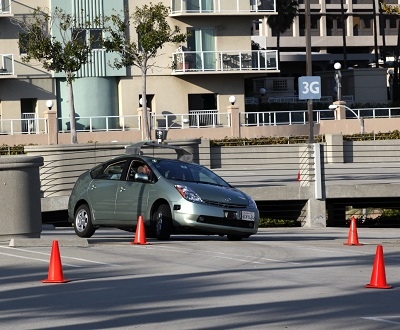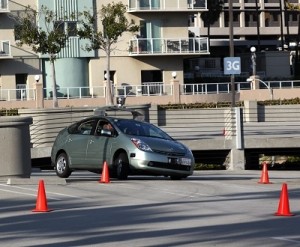Do “Driverless” Cars Mean Changes for Insurers?


With drivers doing less of the actual driving in the new futuristic cars, what can we really expect?
Many anticipate the “driverless” cars mean fewer dangers posed by distracted drivers, but there are still miles to go before deciding how to handle this imminent addition to our roadways.
According to Insurance Journal, “the first versions of General Motors Co. autonomous vehicles, due out by 2020, will drive themselves only on controlled-access highways, such as an interstate,” and cannot be counted on to avoid all accidents. These cars may not be able to react to factors such as deer, road debris, changing road conditions or sharp turns. The reasons are part technological, part regulatory, and part psychological.
“The technology’s probably doable, but how do we implement it, how do we regulate it and how do we standardize it?” asked Michelle Krebs, senior analyst with auto researcher Edmunds.com, based in Santa Monica, CA, in an interview. What’s more, “there are certain people who want to be in control and they don’t want driving taken away from them.” (Pew Trust)
The cautiousness in developing fully autonomous technology reflects what GM officials say is a realistic view of what consumers will accept and what the rules of the road will allow.
Many pose the question: “Once these vehicles become truly driverless, to whom, or what, do we assign blame for traffic violations?” This is a question that legislators, insurers, and manufacturers will have to consider.
“You’re going to have to have some kind of regulatory foundations in place at a reasonably nascent place,” said Bill Visnic, an analyst who follows autonomous vehicles for Edmunds.com. “Or else everybody’s going to get the feeling it’s the Wild West out there.” (Pew Trust)
According to Insurance Journal, in a report released by ORC International Ltd., 90 percent of those surveyed said a “licensed driver should be in the driver’s seat of a driverless car.” Furthermore, only one-third said they’d feel safe on a road with autonomous vehicles.
Google also is testing driverless cars called Google Chauffeur. Thanks, in part to Google’s work with their self-driving car, which uses GPS mapping and other sensors to navigate designated “auto-drive” lanes, states are beginning to propose and implement legislation on how driverless vehicles may be used. However, so far only California, Nevada, Florida and the District of Columbia have implemented rules regarding these futuristic vehicles.
Many questions still remain when dealing with marketing and insuring the proposed vehicles. Prohibitive costs may keep these cars from replacing many daily driver vehicles, and with a mix of human driven and computer driven vehicles on the road new insurance laws will have to reflect the changing atmosphere. Google estimates that driving will be much safer, reducing the 30,000 road fatalities and 2 million injuries by up to 90 percent.
“Proposed legislation in Michigan’s state Senate would allow and regulate automated vehicles of automakers or companies that have partnerships with them, and qualify for special license plates, said the bill’s sponsor, Senator Mike Kowall. A companion bill in the state House would establish rules for liability insurance for the cars,” says Angela Greiling Keane in her Insurance Journal article.
Contributor: Mallory Lengel























